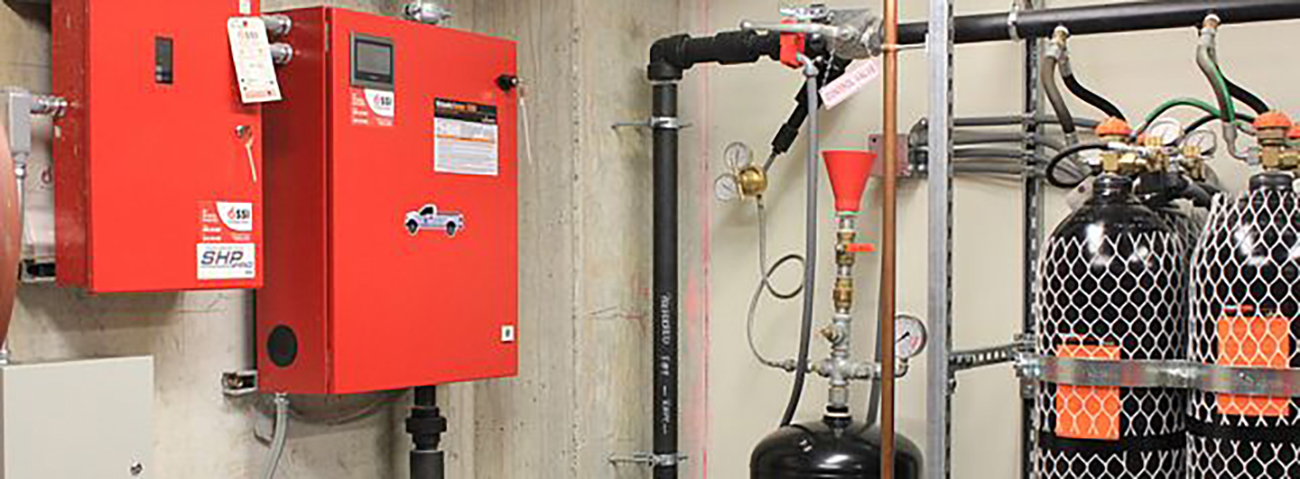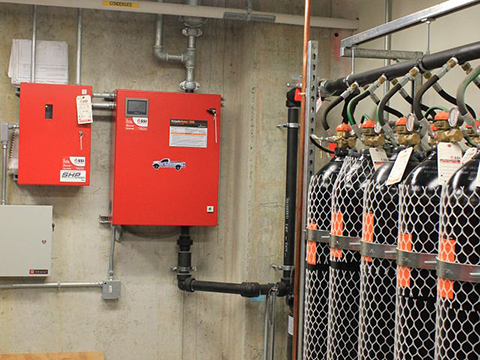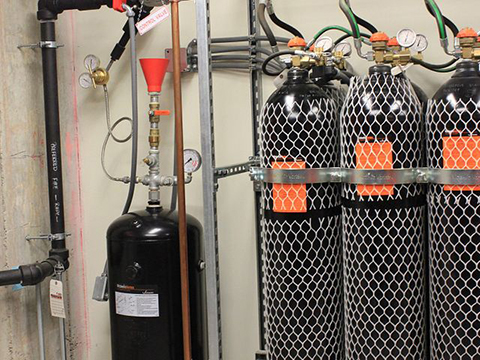George Washington Tent

- Carbon Steel
- Design Flexibility
- Fire Suppression
Philadelphia’s Museum of the American Revolution has a collection spanning nearly 3,000 Revolutionary-era artifacts, including George Washington’s original sleeping and office tent from 1778. In order to open the Valley Forge exhibit featuring Washington’s headquarters, the museum needed to find a fire protection system that would not cause potentially irreparable damage to the centuries-old linen and wool fabric upon discharge and could be hidden from sight of museum visitors.
After scrupulous and meticulous testing by museum management at Victaulic’s facility in Easton, Pennsylvania, the Museum of the American Revolution found a fire protection solution that met its unique needs. A Victaulic Vortex™ Hybrid Fire Extinguishing System was installed in the building’s basement with 25 nitrogen cylinders and a 30-gallon water tank. Using a twin piping network, the 21 strategically positioned emitters were placed in the second-floor auditorium housing Washington’s tent and allow for complete coverage of the room.
The Victaulic Vortex™ Hybrid Fire Extinguishing System distributes a homogeneous suspension of nitrogen and water molecules smaller than white blood cells. The non-candescent cloud absorbs heat and reduces oxygen to extinguish a fire with nearly zero surface wetting and minimal clean up required. Additional testing conducted at Victaulic’s facility also revealed the Victaulic Vortex system’s gentle discharge could suppress fires without creating turbulence that would damage the tent’s fragile cloth.
Not only did the hybrid fire extinguishing system deliver unmatched performance to protect the historic tent, its flexibility enabled a modification of the zone panel controls, which decreased delivery times from one minute to 15 seconds and reduced the amount of equivalent piping from 600 feet to 125 feet.
External Links:
Protecting priceless American history from fire risks, PM Engineer





